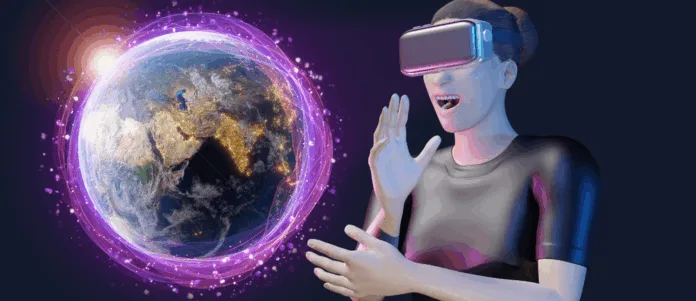The metaverse in 2025 is no longer a futuristic concept—it’s a rapidly evolving digital ecosystem transforming how we live, work, and connect. As technology advances, the line between physical and virtual reality continues to blur, giving rise to a new digital frontier full of opportunities and challenges. From virtual offices to immersive gaming and retail experiences, the metaverse is becoming an integral part of everyday life.
In this article, we explore what the metaverse looks like in 2025, the technological breakthroughs driving its growth, and its impact on various industries and human interaction.
The Evolution of the Metaverse
Originally rooted in science fiction, the metaverse has grown into a tangible reality thanks to innovations in virtual reality (VR), augmented reality (AR), and blockchain technologies. By 2025, advancements in hardware and connectivity have made access to the metaverse more seamless and widespread. Headsets are lighter, more affordable, and wireless, offering a significantly improved immersive experience.
Major tech companies are investing billions to shape and dominate this digital space, creating interconnected virtual platforms where users can socialize, work, shop, and play using custom digital identities.
Virtual Reality Trends Defining 2025
Virtual reality trends in 2025 emphasize user-centered design, increased realism, and interoperability. Platforms now allow cross-platform avatars and assets, meaning a user’s digital identity can move freely between different virtual worlds.
The metaverse is no longer limited to gaming. Educational institutions, healthcare providers, and even governments are leveraging VR and AR for training, remote services, and simulations. Whether it’s attending a virtual university lecture or participating in a remote surgical procedure, the possibilities are expanding rapidly.
Virtual Economy and Digital Assets
A significant component of the metaverse’s growth is the rise of a virtual economy. Digital real estate, NFTs (non-fungible tokens), and in-game assets have become highly valuable. Users can earn a living through activities within the metaverse, such as designing virtual fashion, hosting paid experiences, or investing in digital land.
Cryptocurrency integration has streamlined transactions, making peer-to-peer exchanges more accessible and secure. As digital assets gain legitimacy, regulatory frameworks are starting to emerge, ensuring safer participation in the virtual economy.
Augmented Reality Integration
While VR offers complete immersion, augmented reality integration enhances our physical world by overlaying digital elements. In 2025, AR is a key part of metaverse expansion. Smart glasses, contact lenses with HUD (heads-up display), and mobile AR apps allow users to interact with digital content layered over real-world settings.
Retailers use AR to offer virtual try-ons, real estate agents provide interactive property tours, and museums create engaging, educational experiences. The blend of real and virtual makes the metaverse more accessible to those hesitant to fully enter a digital realm.
The Role of Digital Identity
As users spend more time in virtual spaces, the importance of digital identity grows. These identities are more than avatars; they are customizable profiles with blockchain-backed authenticity, enabling secure interactions and reputation tracking.
Digital identity also raises important questions about privacy, consent, and representation. Efforts are underway to standardize identity verification systems, protect user data, and ensure ethical participation across platforms.
Industry Transformations Driven by the Metaverse
Numerous industries are undergoing transformation thanks to the metaverse in 2025:
Education: Virtual classrooms with interactive simulations and real-time collaboration tools.
Healthcare: Virtual clinics, mental health support, and immersive physical therapy sessions.
Entertainment: Concerts, movies, and sporting events held in virtual venues with millions of global attendees.
Real Estate: Virtual property showings and sales of digital land in popular metaverse platforms.
Retail: Virtual storefronts that mimic physical shopping experiences with AR and VR.
These changes aren’t merely gimmicks—they’re reshaping business models and user expectations.
Challenges and Ethical Considerations
As the metaverse grows, so do concerns around cybersecurity, digital addiction, and inequality of access. Questions about governance, moderation, and intellectual property rights are at the forefront.
Moreover, ensuring inclusive development is crucial. Accessibility for users with disabilities and those from economically disadvantaged backgrounds must be a priority to prevent digital divides from widening further.
Conclusion
The metaverse in 2025 marks a pivotal moment in the evolution of digital technology. What was once a buzzword is now a complex, immersive ecosystem reshaping our reality. With applications in entertainment, work, healthcare, and education, the metaverse is not just a place—it’s becoming a way of life.
As we navigate this transformation, embracing both the opportunities and challenges will define the future of human interaction in an increasingly connected, virtual world.
